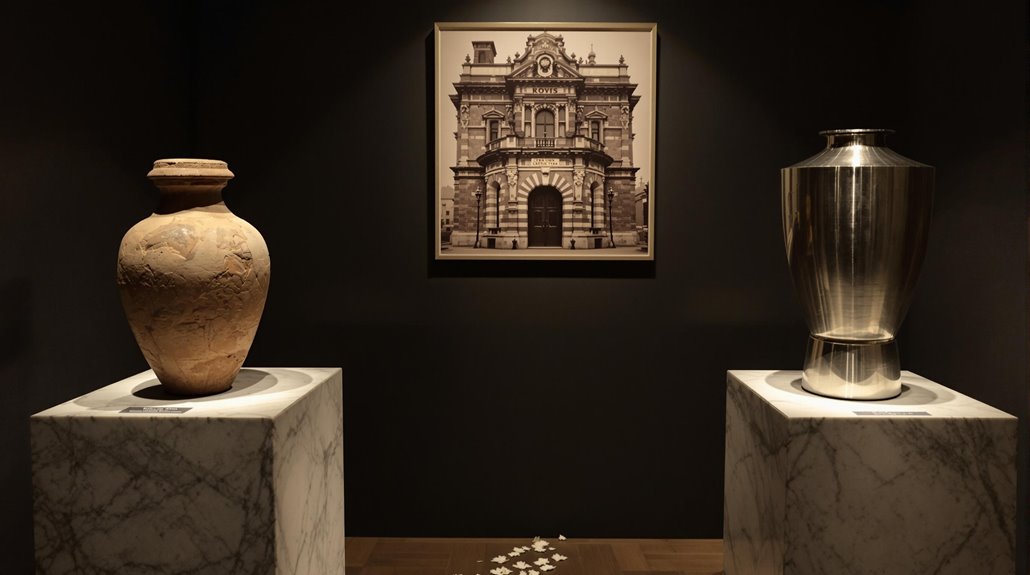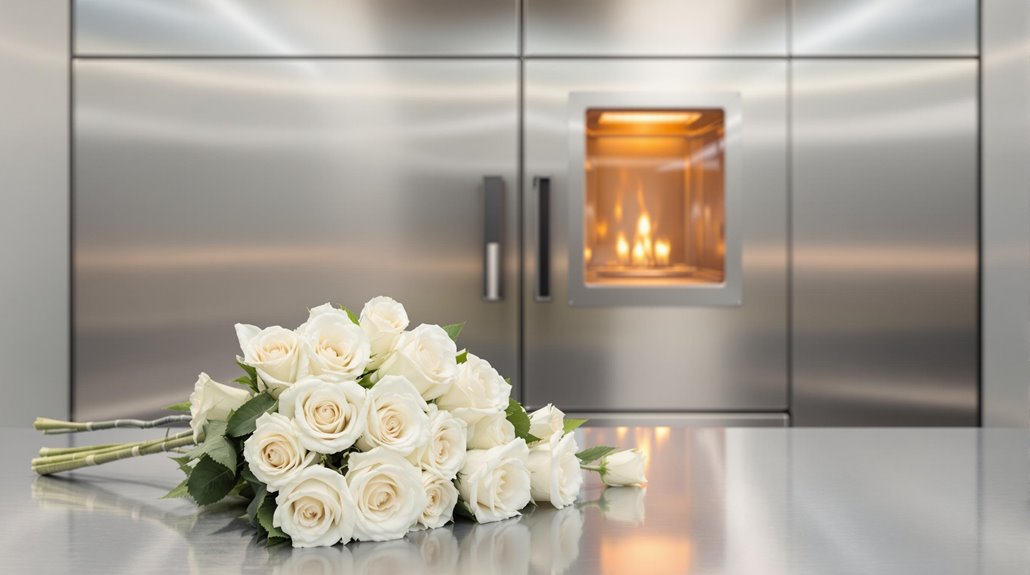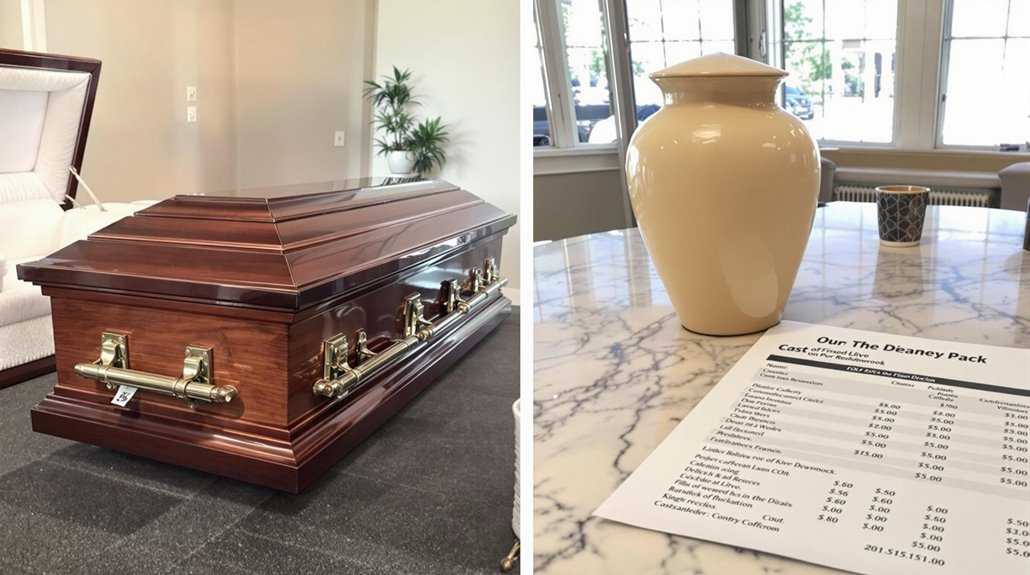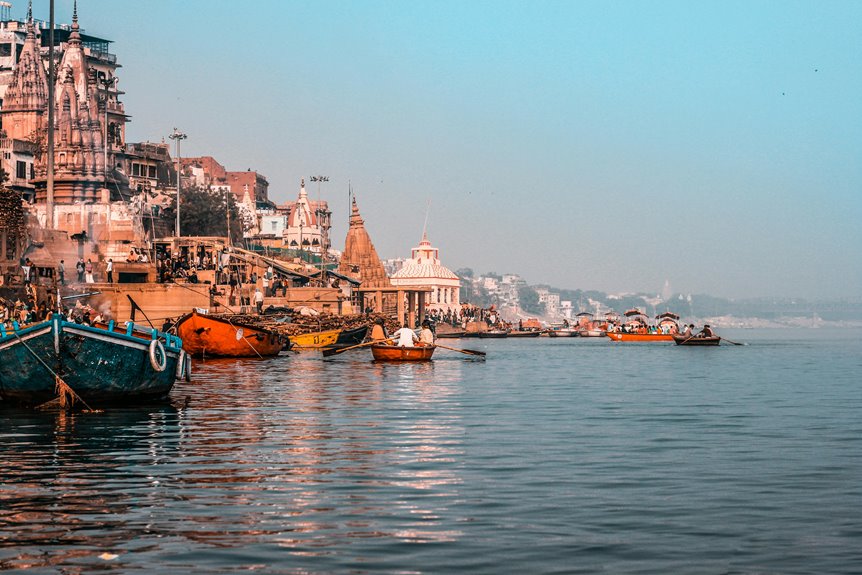Cremation has transformed from an ancient spiritual practice into a $1.6 billion industry that prioritizes efficiency over tradition. You’ll face complex choices between faith-based views, environmental impacts releasing 534.6 pounds of CO2 per cremation, and costs ranging from $2,000-$4,000 versus traditional burial’s $8,000+ price tag. While 57% of Americans now choose cremation, your decision requires weighing personal values, family beliefs, and financial realities. Understanding the full scope of options will illuminate your path forward.
The Historical Evolution of Cremation Practices

While ancient civilizations embraced cremation as a sacred ritual, modern societies have transformed it into a streamlined business venture.
You’ll find evidence of ancient practices dating back 20,000 years, with elaborate ceremonies that honored the deceased through fire-based transformation.
Today’s cremation rituals bear little resemblance to their historical counterparts. You’re now dealing with industrial-grade furnaces that process remains in under two hours, a far cry from the day-long ceremonial pyres of ancient India.
The $1.6 billion cremation industry has reduced age-old traditions to a matter of operational efficiency. What was once a spiritual journey guided by priests and shamans is now a transaction managed by technicians and administrators.
The sacred flames of antiquity have given way to precisely controlled temperatures and standardized procedures.
Religious Perspectives on Cremation
Modern religions hold starkly different views on cremation, creating a complex landscape of acceptance and prohibition.
Hindu traditions mandate cremation as a sacred duty, believing it releases the soul from its physical vessel.
Buddhist views similarly embrace the practice, seeing it as a demonstration of life’s impermanence.
You’ll find Christian beliefs have evolved from historical opposition to widespread acceptance, though some denominations still prefer burial.
Islamic perspectives and Jewish customs generally prohibit cremation, viewing it as a desecration of God’s creation.
You’re looking at a stark divide: Eastern faiths often require it, while Abrahamic religions traditionally reject it.
Secular attitudes have shifted the paradigm, with spiritual interpretations becoming increasingly personalized.
Today, you’re witnessing a market-driven transformation where religious doctrine meets modern practicality, forcing faith communities to reexamine age-old positions.
Environmental Impact and Sustainability
Despite claims of eco-friendliness, traditional cremation releases significant greenhouse gases and toxins into our atmosphere. Each cremation generates an average of 534.6 pounds of carbon dioxide, equivalent to a 500-mile car journey.
Mercury from dental fillings vaporizes into the air, while the intense energy requirements strain local power grids.
You’ll find more sustainable practices emerging in response to these concerns. Green cremation, also known as aquamation, reduces your carbon footprint by up to 75% compared to flame-based methods.
Environmental regulations now mandate stricter filtration systems, while biodegradable urns offer eco-friendly options for ash disposal. The most advanced facilities have adopted water-based dissolution techniques that use just one-eighth of the energy.
If you’re weighing end-of-life choices, these newer methods merit serious consideration – your final decision impacts more than just your legacy.
The Modern Cremation Process Explained

Today’s cremation chambers operate at temperatures between 1,400-1,800 degrees Fahrenheit, utilizing advanced computerized controls and specialized refractory materials that guarantee complete combustion.
You’ll find the process requires careful preparation, including the removal of medical devices and placement in an approved container, before the actual cremation begins in the primary chamber.
The entire process typically takes 2-3 hours for completion, though time can vary based on factors like body mass and the chamber’s efficiency rating.
Heat and Equipment Basics
A standard cremation chamber, known in the industry as a retort, operates at temperatures between 1,600-1,800°F during the average two-hour process.
You’re looking at industrial-grade equipment that’s engineered to handle intense thermal stress while maintaining strict environmental controls. Most modern heat sources are natural gas or propane, though some facilities use electricity.
The cremation chambers aren’t your basic incinerators. They’re sophisticated multi-chambered systems with computer-monitored temperature gauges and specialized air filtration.
You’ll find primary and secondary chambers designed to guarantee complete cremation while minimizing emissions. The main chamber accommodates the body, while the secondary chamber burns off particulates and gases at even higher temperatures.
It’s a precise operation that requires certified technicians to monitor every phase, assuring both efficiency and compliance with environmental regulations.
Steps and Time Required
While many assume cremation is a simple burning process, the reality involves multiple carefully orchestrated steps that unfold over 2-3 hours. From initial verification to final processing, each phase follows strict protocols designed to maintain dignity and prevent errors.
| Process Step | Time Required |
|---|---|
| Documentation & Prep | 15-30 mins |
| Chamber Heating | 30-45 mins |
| Primary Cremation | 90-120 mins |
| Cool Down & Processing | 30-45 mins |
The cremation timeline begins with thorough identification checks and removal of medical devices. Staff carefully position the body in a regulated chamber that reaches temperatures exceeding 1,600°F. After the primary phase completes, a cooling period allows for safe handling of remaining bone fragments, which are then processed into the final form families receive.
Cost Comparison: Cremation vs. Traditional Burial

Making sense of funeral costs requires looking beyond the marketed prices that directors prominently display.
While basic cremation costs typically range from $2,000 to $4,000, funeral homes often bundle services you don’t need, pushing the total closer to $7,000.
Traditional burial expenses, by comparison, start at $8,000 and regularly exceed $15,000 when including caskets, vault fees, and cemetery plots.
You’ll find the real financial impact in the details funeral directors conveniently omit.
Cemetery maintenance fees, typically $200-800 annually, continue indefinitely for traditional burials.
Transportation costs to distant cemeteries can add thousands more.
Cremation eliminates these ongoing expenses, though optional services like viewing ceremonies or commemorative urns can still inflate your final bill.
The difference? With cremation, you’re choosing which extras to include, not being forced into them by necessity.
Legal Requirements and Documentation
Before you can proceed with cremation arrangements, you’ll need to navigate a maze of legal requirements that vary greatly by state and jurisdiction.
Your funeral director or crematory operator must obtain a cremation permit, which requires the deceased’s death certificate signed by both the attending physician and local medical examiner.
You’ll want multiple certified copies of the death certificate for handling matters like insurance claims, bank accounts, and property transfers, since most institutions won’t accept photocopies of this essential document.
Required Permits and Forms
Several critical legal documents must be obtained before proceeding with cremation in the United States.
You’ll need a death certificate signed by a medical examiner or physician, which confirms the cause and manner of death. The permit application process requires identification verification and next-of-kin authorization forms, signed in the presence of a notary public.
State-specific form requirements vary greatly, but you’ll typically need a cremation authorization document, a medical examiner’s permit, and a disposition permit.
Some jurisdictions mandate waiting periods of 24-48 hours after death before cremation can occur. You must also complete a declaration of intent form specifying the final disposition of the cremated remains.
Funeral homes often handle this paperwork, but you’re legally entitled to manage it yourself.
State-Specific Death Certificates
Death certificate requirements vary dramatically across all 50 states, creating a complex web of regulations that can overwhelm families during their time of grief.
You’ll need to obtain multiple copies from your state’s essential records office, often at $10-25 per copy. Most states mandate that you file within 72 hours of death.
State regulations differ considerably in their certificate requirements. Some states, like California, demand detailed cause-of-death information from the attending physician within 15 hours.
Others, such as Texas, allow up to five days. You’ll typically need certified copies for each insurance policy, property transfer, and financial account closure.
While funeral directors often handle the initial filing, you’re responsible for requesting additional copies – a process that can take weeks in understaffed state offices.
Memorial Options After Cremation
Modern cremation practices offer families an array of meaningful memorial options that weren’t available in traditional burials.
You’ll find unprecedented flexibility in how you honor your loved one’s memory, from intimate gatherings to grand celebrations of life.
Memorial services can be held anywhere, at any time, without the constraints of immediate burial requirements.
Consider these popular choices:
- Scattering ceremonies at meaningful locations
- Creation of memorial gardens with permanent urn placement
- Incorporation into art pieces or jewelry
- Division among family members for multiple memorials
Today’s urn options extend far beyond traditional vessels.
You can select biodegradable materials for eco-friendly water ceremonies, commission custom-designed artwork, or choose elegant display pieces for your home.
The key is personalizing the memorial to reflect your loved one’s unique legacy while providing closure for those who remain.
Cultural Attitudes and Changing Trends
Despite centuries of traditional burial practices, cultural attitudes toward cremation have undergone a dramatic transformation in recent decades. You’ll find that societal perceptions have shifted dramatically, with cremation rates rising from just 4% in 1960 to over 57% today in the United States.
These cultural shifts reflect changing values around death and remembrance. You’re now part of a generation that’s embracing simpler, more cost-effective alternatives to traditional burials.
Environmental concerns, geographic mobility, and reduced religious restrictions have accelerated this trend. Catholic churches, which once strictly forbidden cremation, now accept it – though they still prefer traditional burial.
The numbers tell a compelling story: experts project that by 2040, nearly 80% of Americans will choose cremation over burial.
It’s not just about economics – it’s a fundamental reimagining of how we honor our dead.
Making an Informed End-of-Life Decision
Making end-of-life arrangements demands clear-headed analysis of your personal values, preferences, and circumstances. You’ll need to weigh multiple factors during your decision making process, considering both practical and emotional aspects of cremation versus burial.
When evaluating your end of life preferences, focus on these key considerations:
- Financial implications – cremation typically costs 40-60% less than traditional burial.
- Environmental impact – burial plots consume land while cremation reduces spatial needs.
- Family dynamics – consider your loved ones’ cultural and religious views.
- Future flexibility – cremated remains offer multiple memorial options.
Don’t let pressure from funeral homes rush your choice. Take time to research costs, compare services, and discuss options with family members.
Conclusion
As you weigh your final arrangements, you’ll discover that cremation, like a compass pointing true north, offers clear direction through difficult decisions. It’s reshaped modern death care, offering environmental benefits and flexible memorialization options that traditional burial can’t match. Whether driven by cost, faith, or environmental concerns, you’re joining millions who’ve chosen this path. Your informed choice today will give your loved ones clarity tomorrow.





